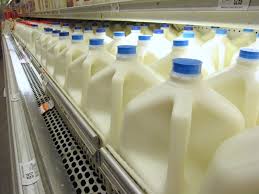
Return to the October 2020 newsletter
When dairy prosperity becomes a production problem
By Darren Turley, TAD executive director
The Texas dairy industry’s continued rapid growth is good news, but it has led to an interesting, and possibly costly, problem.
Our state’s dairy farmers are now producing so much milk that it’s outstripped available processing capacity, especially during spring’s peak milk production season. And this predicament soon won’t be limited to the spring as production in our state continues to grow.
How much has milk production grown in Texas? In August (the latest figures available), Texas dairy farmers produced more than 1.2 billion pounds of milk (almost 150 million gallons), up 7.24% from the same month in 2019. The largest growth was seen in February, when production increased more than 11% compared to the previous year.
This has led the leadership of the Southwest Agency, which includes Dairy Farmers of America Southwest and Select Milk Producers Inc., to adopt a plan in place to initiate a tier pricing plan when capacity is not available for the group to sell all the milk it produces.
Under the plan, dairy farmers would be paid full price for the first 90% of milk produced; additional milk will be priced below the cost of production. This discourages the overproduction of milk that would lead to a financial loss.
Our market has no potential in the foreseeable future for new sales outlets. Despite speculation about a new bottling plant, a possible cheese plant and even another powder plant, no construction is underway, and a new facility would take at least three years to complete.
The Texas Association of Dairymen has provided information about the strong and flourishing dairy industry to several groups and encouraged them to place their plants in Texas. Until then, each dairy farmer will have to face the prospect of receiving less than the cost of production for up to 10% of their milk.
How do you cut back production and for how long? Is it a decision only for the spring flush, or a year-round management change? Breeding heifers later or heavily culling cows in the spring will not be enough to change the production surpluses in Texas. And, unless Mother Nature has some very bad weather planned for Texas, we will continue to see production expand. I have visited with several Texas dairy farmers who are considering expanding in the immediate future.
This tiered-pricing plan will affect each farm differently, but it will be better than the extreme losses of dumping milk, which is still very expensive under the current Texas Commission of Environmental Quality rules.
The future will change much quicker than we think, and growth will continue. We advise our state’s dairy farmers to start now evaluating the options your farm has to reduce milk production starting in January.
Who would have ever imagined the industry’s growth and prosperity actually could be problematic for dairy farmers?